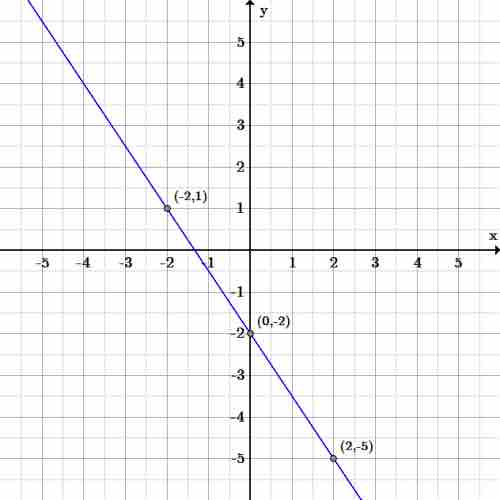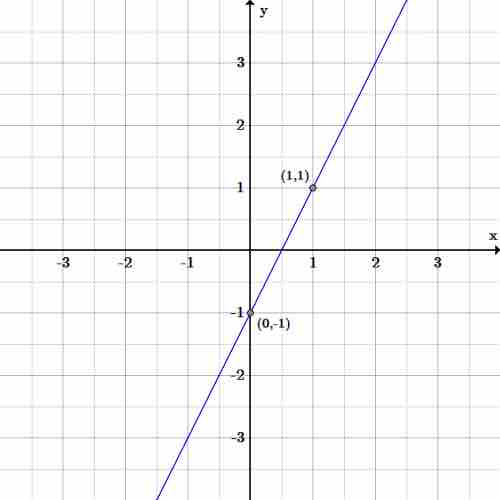Slope-Intercept Form
One of the most common representations for a line is with the slope-intercept form. Such an equation is given by
Converting an Equation to Slope-Intercept Form
Writing an equation in slope-intercept form is valuable since from the form it is easy to identify the slope and
Example
Let's write an equation in slope-intercept form with
If an equation is not in slope-intercept form, solve for
Example
Let's write the equation
Then divide both sides of the equation by
Which simplifies to
Graphing an Equation in Slope-Intercept Form
We begin by constructing the graph of the equation in the previous example.
Example
We construct the graph the line
Since the value of the slope is

Slope-intercept graph
Graph of the line
Example
Let's graph the equation
Next, add
Finally, divide all terms by
The slope is

Slope-intercept graph
Graph of the line